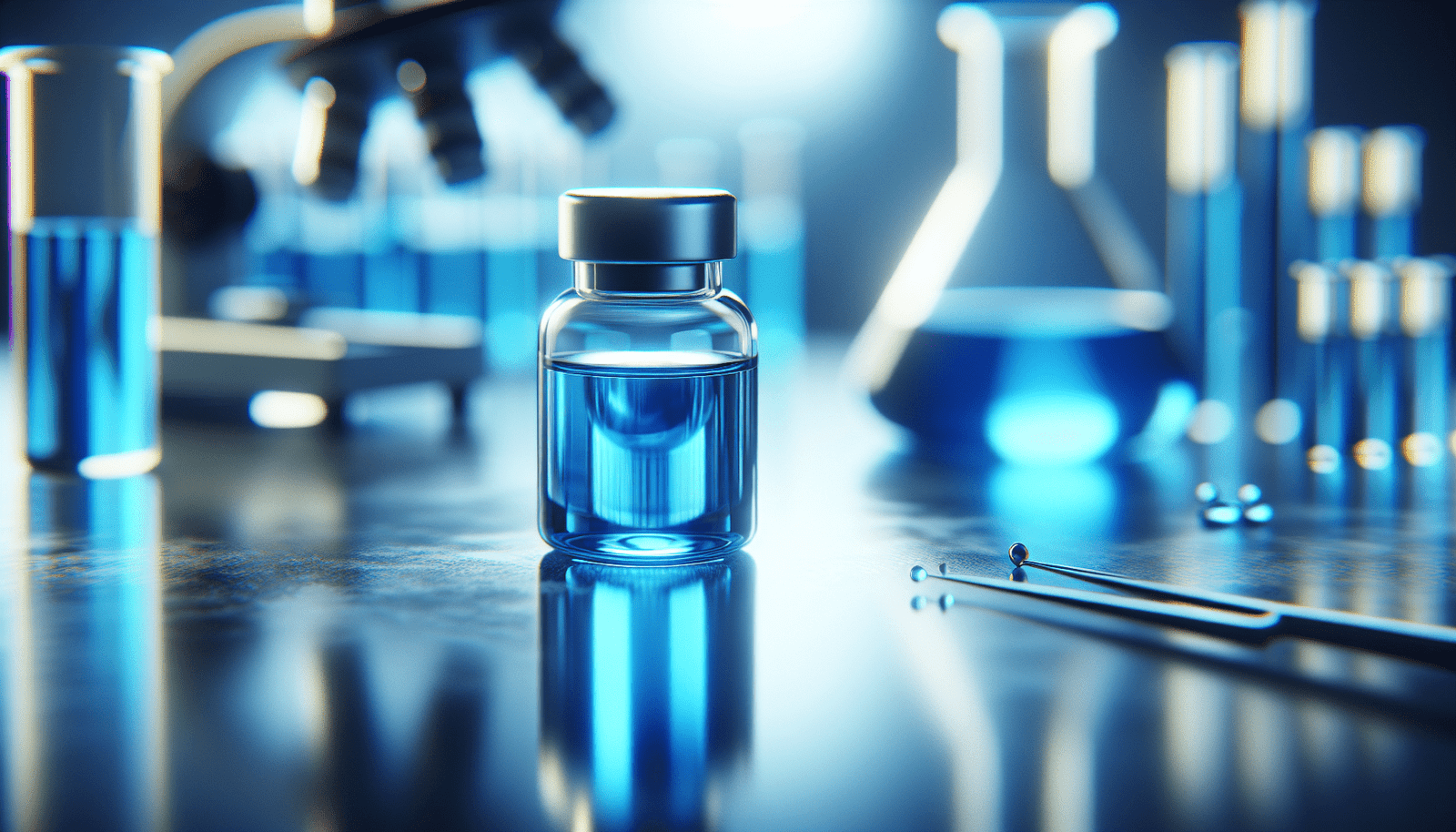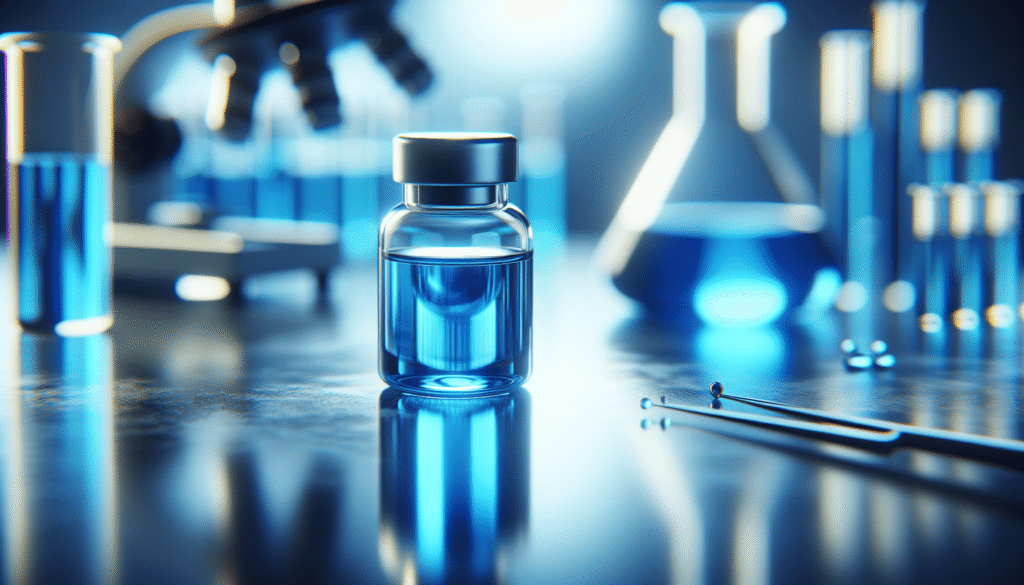
Have you ever wondered about the myriad of substances that exist in the world around you and how they can impact your health? Among these substances is Methylene Blue, a compound that has piqued the interest of scientists and health enthusiasts alike. This article serves to unveil the complexities of Methylene Blue, including its definition, mechanisms of action, applications, and potential benefits.

What Is Methylene Blue?
Methylene Blue, chemically known as methylthioninium chloride, is a synthetic dye that was initially used in the textile and biological fields. It is a blue crystalline powder that is soluble in water, and when dissolved, it imparts a vivid blue color. Over the years, its applications have expanded significantly, especially in the medical field.
This compound is recognized for its involvement in numerous biochemical pathways and also serves as a redox indicator. Redox reactions are essential in biological systems, and Methylene Blue has been found to play a pivotal role in various physiological processes.
Brief History of Methylene Blue
Methylene Blue was first synthesized in the 1870s and gained popularity as one of the earliest synthetic dyes. Its medical applications were discovered shortly thereafter, particularly as an antiseptic and as a treatment for malaria.
As research progressed, the compound’s role as an electron transporter was elucidated, leading to its consideration in various therapeutic contexts, including the treatment of methemoglobinemia, a condition where hemoglobin in the blood has been oxidized and can no longer effectively carry oxygen.
Chemical Structure and Properties
Understanding Methylene Blue from a chemical perspective can help decipher how it functions within the body. Its molecular formula is C16H18ClN3S, featuring a central phenothiazine structure.
Table 1: Chemical Properties of Methylene Blue
| Property | Detail |
|---|---|
| Molecular Formula | C16H18ClN3S |
| Molecular Weight | 319.85 g/mol |
| Appearance | Blue crystalline powder |
| Solubility | Soluble in water, alcohol |
These properties are significant because they influence the compound’s behavior within biological systems.
Mechanism of Action
Understanding the mechanism of action of Methylene Blue entails diving into how it interacts with cells at a molecular level. The compound functions primarily as an electron transporter, facilitating various biological processes.
Electron Transport Chain
Methylene Blue’s most notable role is as a mediator in the electron transport chain (ETC), a crucial component of cellular respiration that occurs in mitochondria. Within this context, it helps to transfer electrons efficiently, thereby generating adenosine triphosphate (ATP), the energy currency of the cell.
Role in Cellular Respiration
- ATP Production: Methylene Blue enables more efficient ATP synthesis by facilitating electron flow through the ETC.
- Reduction and Oxidation: As it alternates between oxidized (blue) and reduced (colorless) states, Methylene Blue acts as a redox agent, participating in oxidation-reduction reactions.
Antioxidant Properties
Methylene Blue also exhibits antioxidant activity, which can mitigate oxidative stress in cells. Oxidative stress results from an imbalance between reactive oxygen species (ROS) and the body’s ability to neutralize them. By neutralizing free radicals, Methylene Blue contributes to maintaining cellular integrity.
Mechanism of Antioxidant Action
- Scavenging Free Radicals: Methylene Blue reacts with free radicals, thus breaking the chain reaction of oxidative damage.
- Regeneration of Antioxidants: It can help regenerate other antioxidants in the body, enhancing overall protective mechanisms.
Medical Applications of Methylene Blue
The range of medicinal uses for Methylene Blue is extensive. Its applications stem from both its physiological effects and therapeutic potential.
Treatment of Methemoglobinemia
One of the most common medical uses of Methylene Blue is in treating methemoglobinemia, a condition characterized by elevated levels of methemoglobin in the blood.
How It Works
- Reduction of Methemoglobin: Methylene Blue acts as a reducing agent, converting methemoglobin back into hemoglobin, thus restoring the blood’s capacity to transport oxygen effectively.
Antidote for Poisoning
Methylene Blue has also found utility as an antidote for certain types of poisoning, particularly those involving nitrites or aniline derivatives.
Mechanism in Poisoning Cases
- Reverse Oxidative Effects: By restoring hemoglobin functionality, it counteracts the toxic effects of methemoglobin formation due to poisoning.
Role in Neurodegenerative Diseases
Emerging research suggests that Methylene Blue may have therapeutic potential in neurodegenerative disorders such as Alzheimer’s and Parkinson’s diseases.
Neuroprotective Mechanisms
- Enhancing Mitochondrial Function: Its ability to improve mitochondrial function may slow down the progression of neurodegeneration by enhancing cellular energy production.
- Reducing Neuroinflammation: Methylene Blue can also aid in reducing oxidative stress and neuroinflammation, which are contributors to neurodegenerative diseases.
Antimicrobial Properties
Methylene Blue has demonstrated effectiveness as an antimicrobial agent.
Applications in Infection Control
- In vitro Activity: Research indicates that it exhibits antimicrobial properties against various pathogens, including bacteria and fungi, making it an intriguing candidate for combating infections.
- Wound Healing: In topical applications, it may assist in wound healing and infections due to its antiseptic properties.
Potential Benefits of Methylene Blue
Though Methylene Blue has a wide range of medicinal applications, it is essential to consider its potential benefits as well.
Cognitive Enhancement
Some studies imply that Methylene Blue may contribute to cognitive enhancement.
Mechanisms of Action
- Improved Metabolism: By facilitating mitochondrial function, it can lead to increased ATP production, which is crucial for neuronal health and function.
- Neuroprotective Effects: Its ability to reduce oxidative damage also supports overall cognitive health.
Mood Disorders
The implications of Methylene Blue in treating mood disorders are being researched as well.
Antidepressant Effects
- Monoamine Oxidase Inhibition: Methylene Blue may exhibit monoamine oxidase (MAO) inhibition, a mechanism that can enhance mood-regulating neurotransmitter levels.
- Neurotransmitter Balance: By modulating neurotransmitter systems, it holds potential as an adjunctive treatment for mood-related disorders.
Support for Chronic Conditions
Its application is being explored in the context of chronic conditions where mitochondrial dysfunction plays a role.
Cardiovascular Health
- Reducing Metabolic Dysfunction: It may alleviate metabolic dysfunction in cardiovascular diseases by improving energy metabolism and reducing oxidative stress.

Side Effects and Considerations
While Methylene Blue boasts a range of potential benefits, it is crucial to address its side effects and concerns.
Common Side Effects
- Gastrointestinal Issues: Some individuals may experience nausea and diarrhea.
- Urine Discoloration: Methylene Blue can cause urine to turn blue or green, which is usually harmless but might be alarming to users.
Contraindications and Safety
- Serotonin Syndrome: Use caution if taking other serotonin-affecting medications, as Methylene Blue may increase the risk of serotonin syndrome.
- Pregnancy and Breastfeeding: Its safety in pregnant or breastfeeding individuals has not been well-studied; hence, one should consult a healthcare professional.
Practical Uses of Methylene Blue
In practical terms, Methylene Blue is available in various formulations depending on its intended use.
Dosage Forms
- Injectable Solutions: Commonly used for medical indications such as treating methemoglobinemia.
- Oral Tablets: Available in some regions for off-label uses, including cognitive enhancement.
Alternative Uses
In addition to medical applications, Methylene Blue has found utility in the laboratory setting.
Staining and Diagnostics
- Biological Staining: Utilized for staining cells and tissues in microscopy to differentiate cellular structures.
- Diagnostic Tool: It may play a role in diagnostic tests, particularly in identifying certain bacterial strains.
Conclusion
The multifaceted nature of Methylene Blue underscores its complex role within both scientific and medical landscapes. From its humble origins as a synthetic dye to its current standing as a potent therapeutic agent, the understanding of Methylene Blue continues to evolve.
As the research expands, it becomes increasingly evident that this compound carries the potential not only to address specific medical conditions but also to enhance cognitive function, combat infections, and support overall health. Given its promising applications, Methylene Blue could very well be a compound worth revisiting in the context of modern medicine.
In light of its diverse applications, you should consult with healthcare professionals before considering Methylene Blue for self-administered purposes. The intricate balance of benefits and risks always necessitates a discerning eye, particularly when it comes to substances that can significantly impact health.